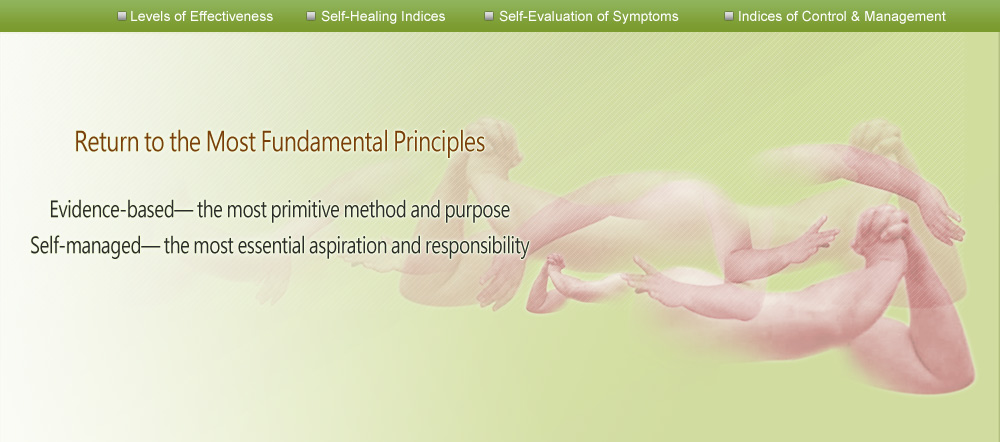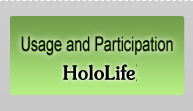
In clinical trials conducted at medical centers, HoloLife’s unique functional foods capable of generating what we call the “target resonance effect” have been confirmed to work quite a few wonders:
1.Paralysis is no longer a permanent symptom for stroke patients that were struck more than six months earlier. In fact, the patient still has a good chance of regaining his capability for many Activities of Daily Living (ADLs). In contrast, no modern drugs have been known to be effective in reversing paralysis symptoms caused by a stroke in patients that were struck more than six months earlier.(Asia Pacific Journal of Clinical Nutrition 2016;25(2):265-272)
2. Evaluation based on the Unified Parkinson’s Disease Rating Scale (UPDRS) finds a 15 percent improvement in the condition of patients in just six months. In contrast, an improvement by no more than 3-5 percent is already something hard to come by through modern drugs. (Journal of Medical Sciences,Clinical Efficacy of Nutritional Food Supplement in Non-motor Symptoms of Parkinson’s Disease. J Med Sci 2011; 31(6):257-262)
3.It is possible to simultaneously alleviate the symptoms of attention deficit hyperactivity disorder (ADHD) and rhinitis by over 20 percent and 50 percent respectively over the course of six weeks. Clinical studies have confirmed that as many as 60 percent of ADHD patients tend to also suffer from the complication of rhinitis. But ADHD and rhinitis are seldom studied together as they come under different branches of medicine. As such, Western medicine has hardly thought of developing an integrated approach toward treating the two at the same time.(Presented in the 45th Annual Conference of Taiwan Society of Psychiatry)
4.Taking the recommended functional foods for seven days is all it takes to cure insomnia, anxiety, bodily aches, lack of appetite, and fatigue—many of the common symptoms that plague heroin addicts who are trying to kick the habit. But modern medicine requires different drugs for different symptoms. What’s worse, not all symptoms can be addressed in the drugs available. Most of those drugs only work to control the symptom as opposed to eliminating them permanently. (The 2ndWorld Conference of Natural Medicine, Conference Proceedings papers)
Moreover, HoloLife has accomplished clinical studies and case reports for more than 30 different symptoms. These clinical results are empirical findings that should not be taken lightly in constructing a well-rounded therapeutic mechanism. In particular, some of these clinical findings seem to defy what man has long taken for granted as medical knowledge. They deserve further research and may offer an opportunity to unfold a new dimension in medicine.
Identify Levels of Effectiveness
First and foremost, it is essential to identify different levels of treatment effectiveness: easing symptoms, identifying the root of the problem, effecting a permanent cure, and eradicating any possibility of relapse. The first level is characterized by the control or alleviation of an illness; generally speaking, this control or alleviation will falter once the treatment process is discontinued. Next is going beyond easing symptoms and getting at the root of the illness
A test of permanent cure can be witnessed if a patient sustains a level of improvement even after treatment is disrupted. A permanent cure, as the phrase indicates, describes the absence of the targeted illness even after treatment has been stopped for quite a while. The definition of eradicating any possibility of relapse should be self-evident enough.
Whenever we have need of medication, we owe our gratitude no matter whichever of the four levels of effectiveness is to be attained at the end of the day. Health and hope will definitely become our rewards so long as we persist with our quest—our endeavors backed by practical experiences and independent choices.
 When someone is sick, his sleep, appetite, bowel movements, concentration, strength and mood tend to be adversely affected. As he recovers, the affected aspects will also show recuperation as well until his health is fully restored. We call appetite, bowel movements, sleep, strength, span of concentration, and mood the six self-healing indices. To date, we believe, no medical instrument can evaluate these six measures more quickly and accurately than man can himself. Keeping track of changes in these six self-healing indices allows us to determine in which direction an illness is progressing, if the adopted treatment plan is working, and if side effects are taking shape. In other words, this enables us to attain empirical results through first-hand experiences in the capacity of “autonomous patients.”
When someone is sick, his sleep, appetite, bowel movements, concentration, strength and mood tend to be adversely affected. As he recovers, the affected aspects will also show recuperation as well until his health is fully restored. We call appetite, bowel movements, sleep, strength, span of concentration, and mood the six self-healing indices. To date, we believe, no medical instrument can evaluate these six measures more quickly and accurately than man can himself. Keeping track of changes in these six self-healing indices allows us to determine in which direction an illness is progressing, if the adopted treatment plan is working, and if side effects are taking shape. In other words, this enables us to attain empirical results through first-hand experiences in the capacity of “autonomous patients.”
Conduct Self-Evaluation of SymptomsIt is not uncommon for a doctor to see 50 patients in just three hours, averaging 3.6 minutes for each. In that short span of time, the doctor is supposed to listen to what the patient has to report, make and explain his diagnosis, fill out medical records, and prescribe. Errors should be hardly surprising in such haste. But there is a partial remedy to this. The patient can expect to better protect himself by presenting a more effective description of his symptoms. While an oral report tends to be disorganized, putting it down on paper is a preferable alternative. What should the patient jot down? It should consist of the following:
| 1. | 1. Description of the symptoms, including their position, severity and duration as well as their impact on daily living and work. |
| 2. | 2. Frequency of recurrence, e.g. time/day, day/week and x/10. When they describe their symptoms, people tend to opt for either side of a coin: yes or no and the feeling of pain or otherwise. The frequency of recurrence is oftentimes ignored. But the continuously changing frequency of recurrence is really the best measure of how a symptom is evolving. It is also a key barometer of whether the adopted treatment plan is really tackling the root of the illness. |
| 3. | 3. Conditions most conducive to recurrence, which are certainly useful for the reference of medical specialists in conducting diagnosis. Moreover, the specialists can also monitor the symptoms readily associated with the aforementioned conditions as treatment progresses. By observing if the symptoms are eased or even eradicated when such conditions do occur, they can determine if their treatment plan can effectively rectify the root of the illness. |
Identify Stages of Recuperation & Set Indices of Control and Management
Identification of different stages of returning to health is conducive to setting indices for better monitoring and tracing the treatment process. For example, there should be a maximum waiting period for the condition to start turning for the better. Readjustment of the treatment process is to be allowed only a given number of times when this expected betterment fails to materialize. When and if no further progress is made during a given period of time, it may signify that the greatest possible effectiveness has been achieved and that further progress is all but impossible. True, the length of every stage and the ultimate effectiveness vary from one case to another due to differences in treatment plans, illnesses and the patient’s internal capacities for relaying energy. But these indices of control and management are indeed concrete and useful tools in helping the patient undertake empirically supported, autonomous health management. In turn, they go a long way toward facilitating doctor-patient communication and trust.

